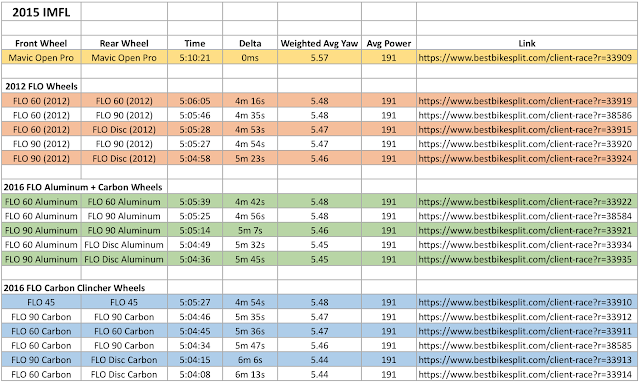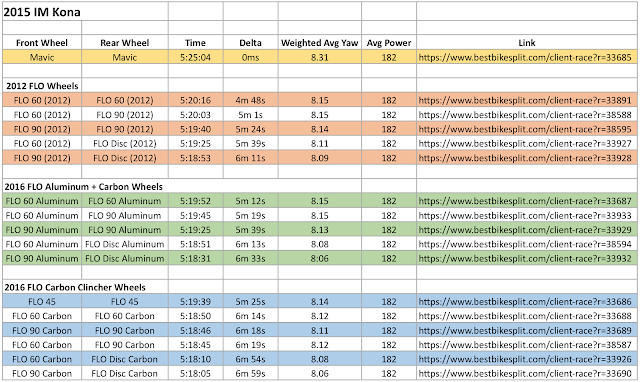Legacy Article: The data discussed in this article is taken from our previous generation of wheels.
Without a doubt, our most popular blog article to date is our “The Great Debate – Aero vs. Weight” article which is Part 1 of this series. For that article, we sent our aero data to the mad scientist from Best Bike Split, Ryan Cooper, so he could give us a third party estimate of how much time the all new FLO wheels would save you on popular Ironman courses. In Part 2 of this series, we calculated time savings for even more courses and wheel combinations. For those who don’t know, Ryan Cooper is a PhD optimization mathematician, who has been predicting incredibly accurate bike splits for triathletes, and pro tour riders with his Best Bike Split math model.
After finishing the design of our new 2016 wheel line, and visiting the A2 Wind Tunnel, we sent our new aero numbers to Ryan so he could run our wheels through his math model. Below, we have ran multiple wheel combinations over two Ironman courses. You’ll see numbers for our 2012 model wheels, our 2016 Aluminum + Carbon wheels, and our 2016 Carbon Clincher wheels. We chose to model a flat course, Ironman Florida, and a course with a relative amount of climbing, and higher winds, Ironman Kona.
Why Do We Use Best Bike Split?
All of our wind tunnel numbers are calculated using only the wheel in a stand. While studying individual wheels in a wind tunnel is excellent for validating designs, there are better options for calculating how much time you will save with wheels on a bike with a rider. We like to partner with Ryan for this data because his model takes the entire bike, and rider into consideration. This allows us to give our customers a better estimate of how much time a specific wheel set will save them on a course.
Now let’s get to the numbers!
Rider
We chose a rider with the following characteristics for our model.
Gender: Male
Weight: 160lbs
Age: 33
FTP: 250 watts
Let’s take a look at the course profiles and times savings for each FLO wheel combination when compared to a Mavic Open Pro wheel set.
Ironman Florida
Ironman Kona
After looking at the numbers, there are few things that stuck out to me.
- Our new 2016 wheels were designed after studying real world wind conditions. During that study, we learned that average yaw angles were much lower than we originally thought, and we developed our new wheel line with that in mind. The aero improvements of our 2016 wheels when compared to our 2012 wheels (which were designed for high yaw angles) is considerable. These times savings and average yaw angles calculated by Ryan, line up exactly with all of our real world data, and are in line with our Net Drag Reduction Value Formula.
- When looking at our wind tunnel results, the FLO 60 Carbon Clincher is slightly faster than the FLO 90 Carbon Clincher at low yaw angles. On a lower yaw course like IMFL, the FLO 60 Carbon Clincher actually beats out the deeper FLO 90 Carbon Clincher. However, on a higher yaw course like Kona, the 90 Carbon Clincher is the faster option. This is something that very strong riders or riders who are riding in very low wind condition races should consider.
- Time differences compared to the original study (Part 1 and Part 2) are due to us using real weather data from races as experienced by the athletes on race day.
I hope you have enjoyed this article. Please leave your comments and questions below.

Co-founder at FLO Cycling. Jon manages the day to day operations and acts as the lead engineer for all FLO products.





